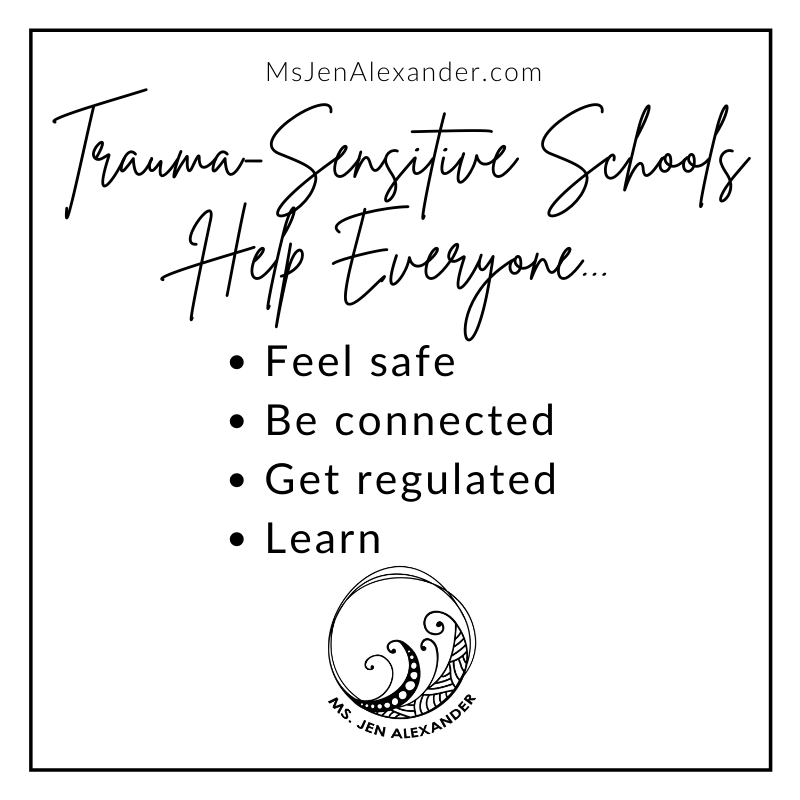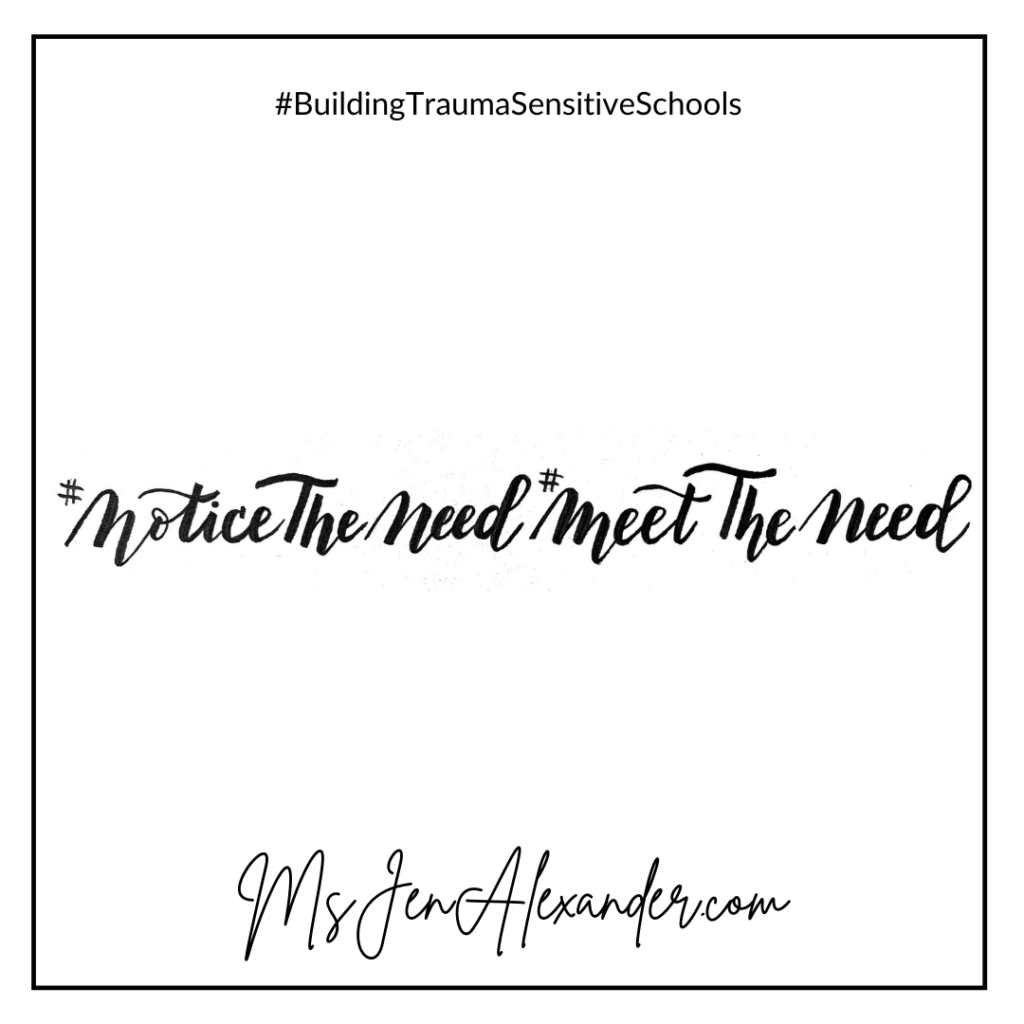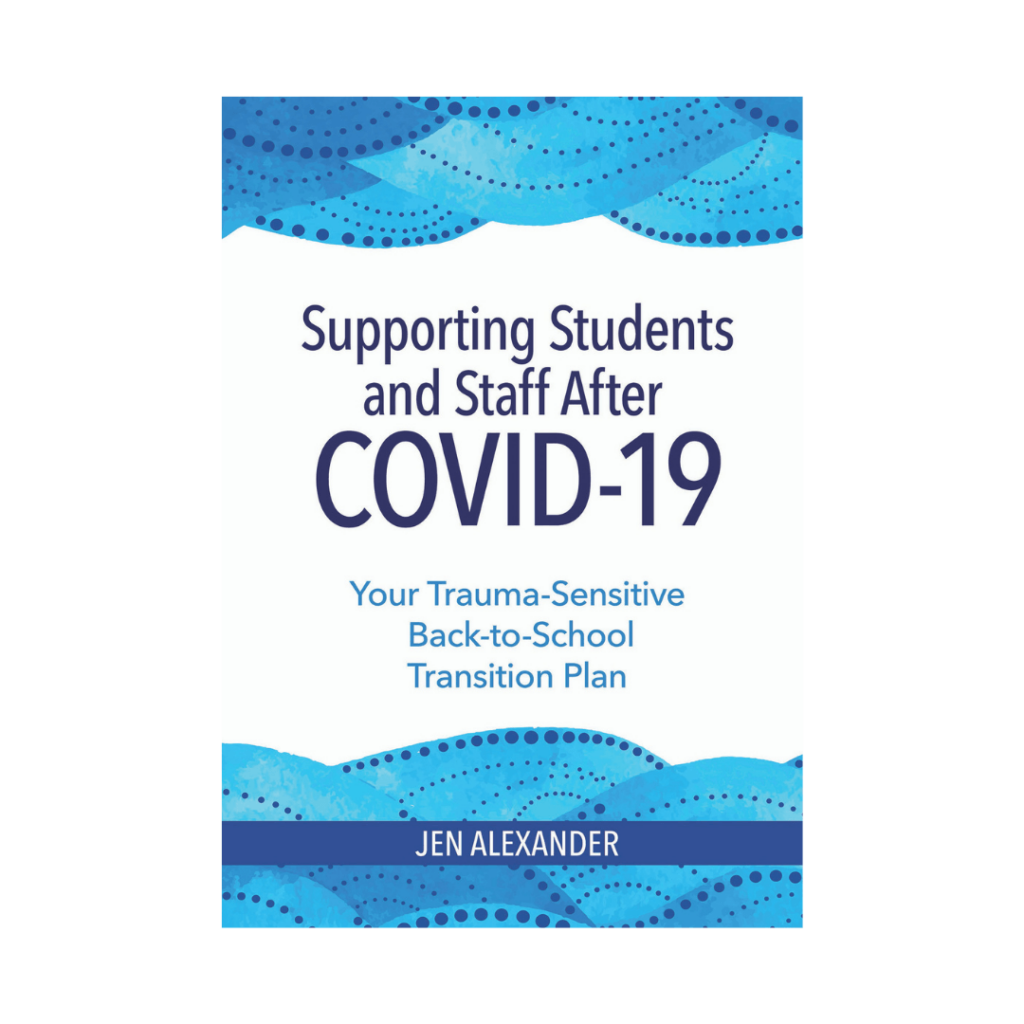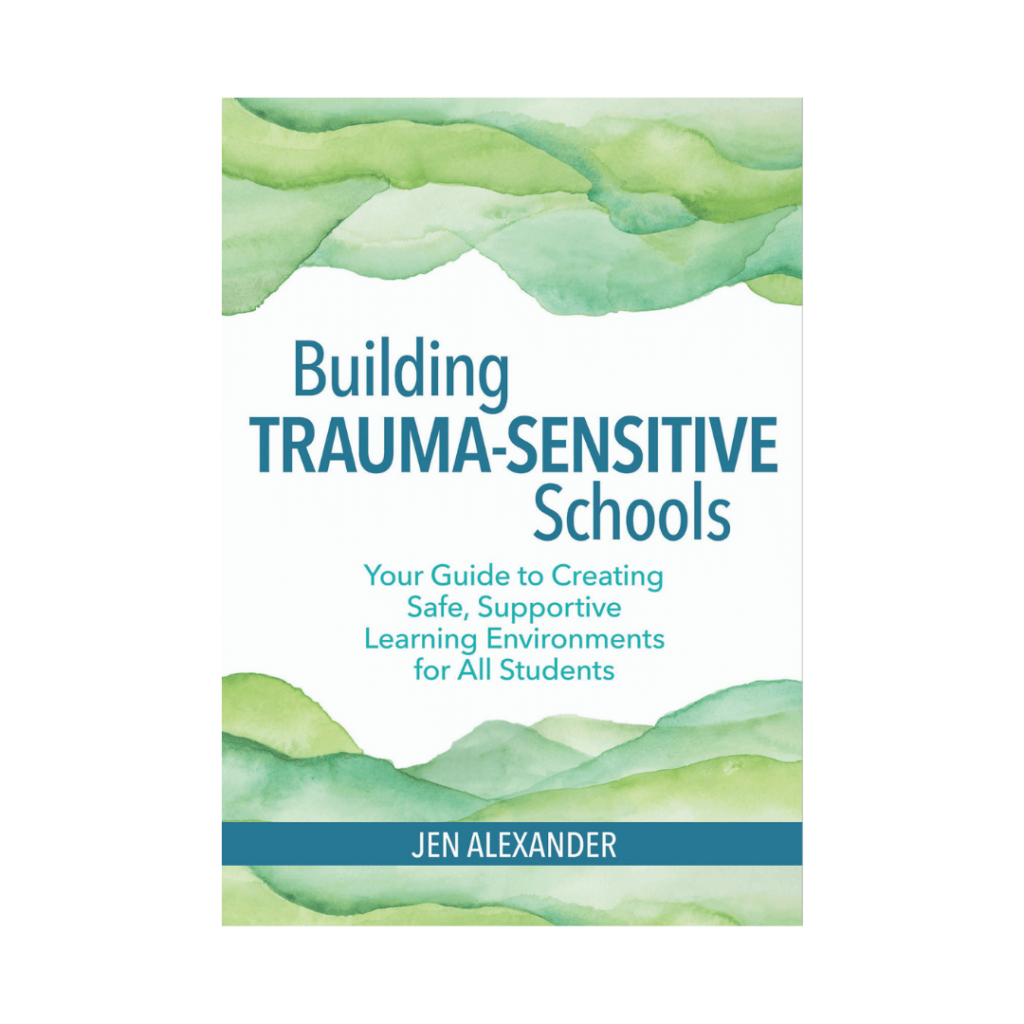Educators realize that trauma brings change for individuals, relationships, and entire communities. Read this post to connect with resources that can help you help yourself and others in response to trauma—whether now or later.
Are you making the transition from distance learning back into brick-and-mortar schools? Is another transition happening for you and your students that is related to the pandemic? Or, are you experiencing a different collective trauma and wondering where to begin to support yourself and others? I have several ideas to help you. All are grounded in my four essentials of building trauma-sensitive schools, which include helping everyone feel safe, be connected, get regulated, and learn.

In this post, I’ll first give you access to four easy-to-implement suggestions that can be helpful for anyone navigating big change at school caused by some type of trauma, including when making the transition back to face-to-face instruction after learning online during the pandemic. Then, I will share ideas that can help you take your next steps in building a trauma-sensitive school. This is an environment that not only helps all faculty better respond to the needs of everyone who may be experiencing too much stress but also, allows you to prevent trauma and foster resilience.
Right Now Trauma-Informed Suggestions
After a traumatic event or when making a transition related to a collective trauma, such as the pandemic, think about how to #NoticeTheNeed and #MeetTheNeed in yourself and others. It’s the foundation of trauma-informed care. If you’re interested in stickers about noticing the need and meeting the need, visit Ms. Jen’s Shop where you can purchase them.

Also, consider what is or has been too much for those in your community. For instance, everyone has potentially been experiencing too much stress. It’s important to keep this in mind. Additionally, focus on what might be not enough for folks at the same time. With the pandemic, for example, social interaction for many has been not enough so it’s important to prioritize human connection. From there, consider what is just right for individuals—recognizing that unique individuals may need different things.
Consider what is or has been too much for those in your community. Also, focus on what might be not enough for folks at the same time. From there, consider what is just right for individuals—recognizing that unique individuals may need different things.
For my top trauma-informed suggestions that go with these ideas, check out this blog post over at The Inclusion Lab at Brookes Publishing. It gives tips for making the transition back to face-to-face instruction. There’s also a short video you can share with faculty to help everyone #NoticeTheNeed and #MeetTheNeed—together.
Next Steps for Building Trauma-Sensitive Schools
Trauma impacted our communities before COVID-19, and those effects are even bigger now. As such, all schools have a responsibility to build a trauma-sensitive learning environment. When faculty respond to everyone in trauma-sensitive ways, both students and adults can feel better. They will also be better ready for teaching and learning. In fact, what’s good for traumatized people is actually beneficial for everyone. Whether you were learning how to create a trauma-informed school community before the pandemic or are getting started now, I’m glad you’re here. Not sure what to do at this point? Here are three good next steps for building trauma-sensitive schools.
Step 1: Learn More About Trauma in Relation to the Pandemic
Learn more about trauma in relation to the pandemic and begin thinking about your goals for meeting the needs in your community. My ebook Supporting Students and Staff After COVID-19 is a great place to start. It introduces the definitions of trauma and a trauma-sensitive school while giving practical ideas for meeting the needs of students and staff in relation to COVID-19. It will lead you to other resources too if you’re interested. Check out my Q &A with Brookes Publishing to learn more.
Step 2: Seek Trauma-Informed Professional Development
Consider inviting me to your district or organization either virtually or in-person to provide professional development related to understanding and addressing the needs of those affected when trauma brings change. Explore many learning options on my events and training opportunities page. Or, email me at info@msjenalexander.com to discuss your unique needs. If you’re curious about what other districts are doing right now in light of the pandemic, here are a few examples.
- Starting with a 90-minute webinar for their entire district’s faculty that focuses on what trauma is and how to begin building a trauma-sensitive learning community.
- Going further with a 90-minute webinar for all staff that addresses educator wellbeing.
- Scheduling a deeper dive into what works and why when building trauma-sensitive schools. It can be scheduled face-to-face or online. Think of this as the first day of what could be a multi-day training for certified and non-certified staff. The hours can be facilitated all at once or split it up over multiple sessions.
- Adding in 2-3 hour seminars on topics like supporting grieving youth or counseling grieving youth.
Step 3: Build Trauma-Sensitive Schools Through Action Planning
Read more about how to build a trauma-sensitive learning environment that meets the needs of those impacted by COVID-19 and other potential adverse experiences in my bestselling book Building Trauma-Sensitive Schools. This is your go-to resource for how to implement a trauma-informed multi-tiered system of support that meets the needs of all students, including those who have experienced severe traumatization. Download the hand-out below to learn more about how this resource can support pandemic recovery in your community. From there, create plans for change—while committing to ongoing support, coaching, and consultation for your teams.
Closing Words When Trauma Brings Change
While this school year has been stressful, the collective trauma of the pandemic unfortunately isn’t over yet. Many people are still in survival mode—doing their best to get by and get through. Often, when trauma brings change, the effects hit even harder afterwards. As such, you, as an educator, may not be observing the full effects of the pandemic right now. While that may be disheartening to realize, it’s an important reality. Not only has the virus threatened physical safety, but for many, responses across the globe have decreased felt safety. No vaccine will give us herd immunity for how relationships have been fractured—whether at the personal or systems levels. Only humans coming together in ways that hold space for complicated truths can do that.
Not only has the virus threatened physical safety, but for many, responses across the globe have decreased felt safety. No vaccine will give us herd immunity for how relationships have been fractured—whether at the personal or systems levels. Only humans coming together in ways that hold space for complicated truths can do that.
Importantly, when trauma brings change, I am here to support your teams as you come back better again.
Let’s do this,

#BuildingTraumaSensitiveSchools #COVID-19 #CollectiveTrauma #Recovery #HopeAndHealing #HelpingYouHelpKids





